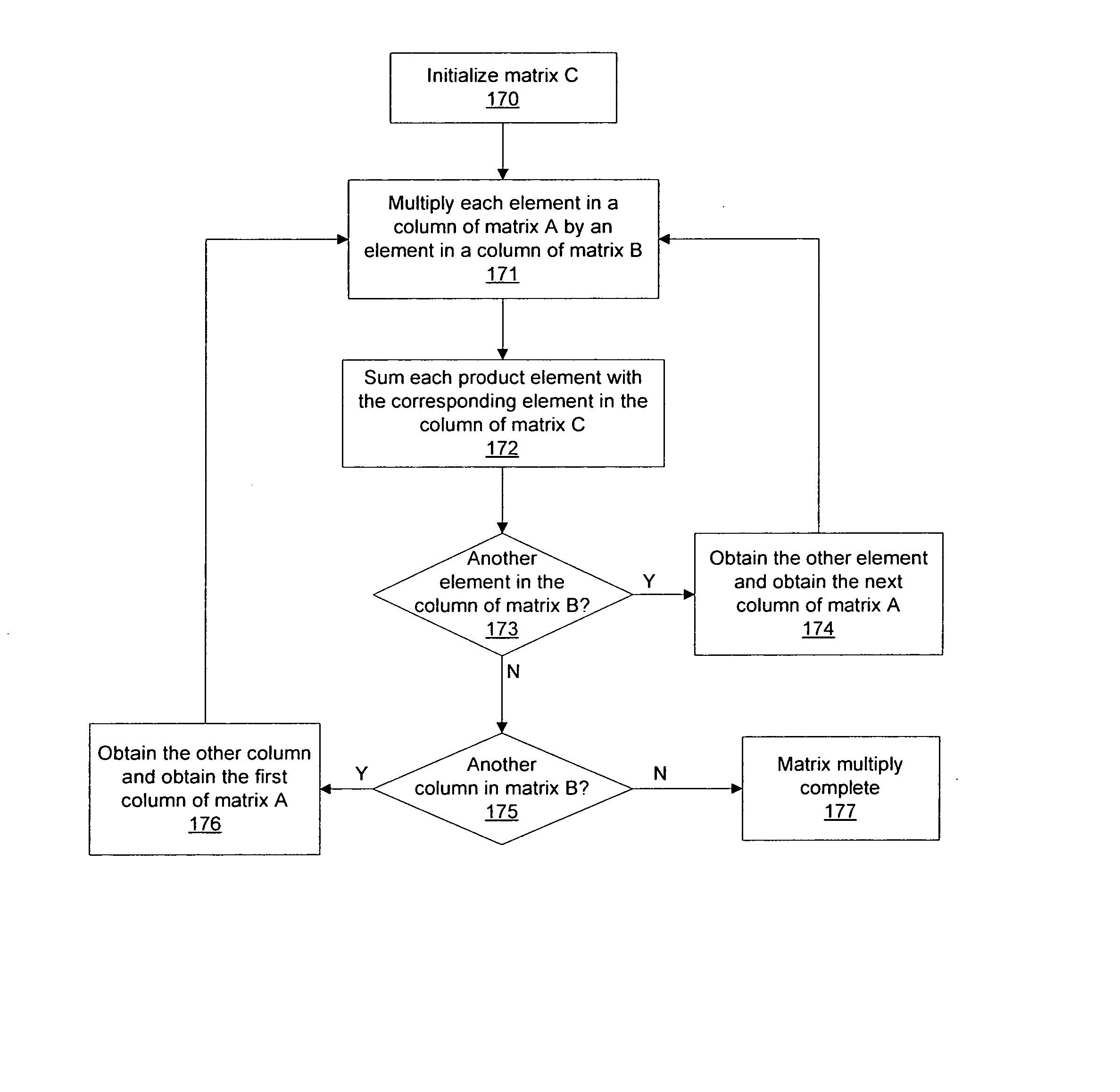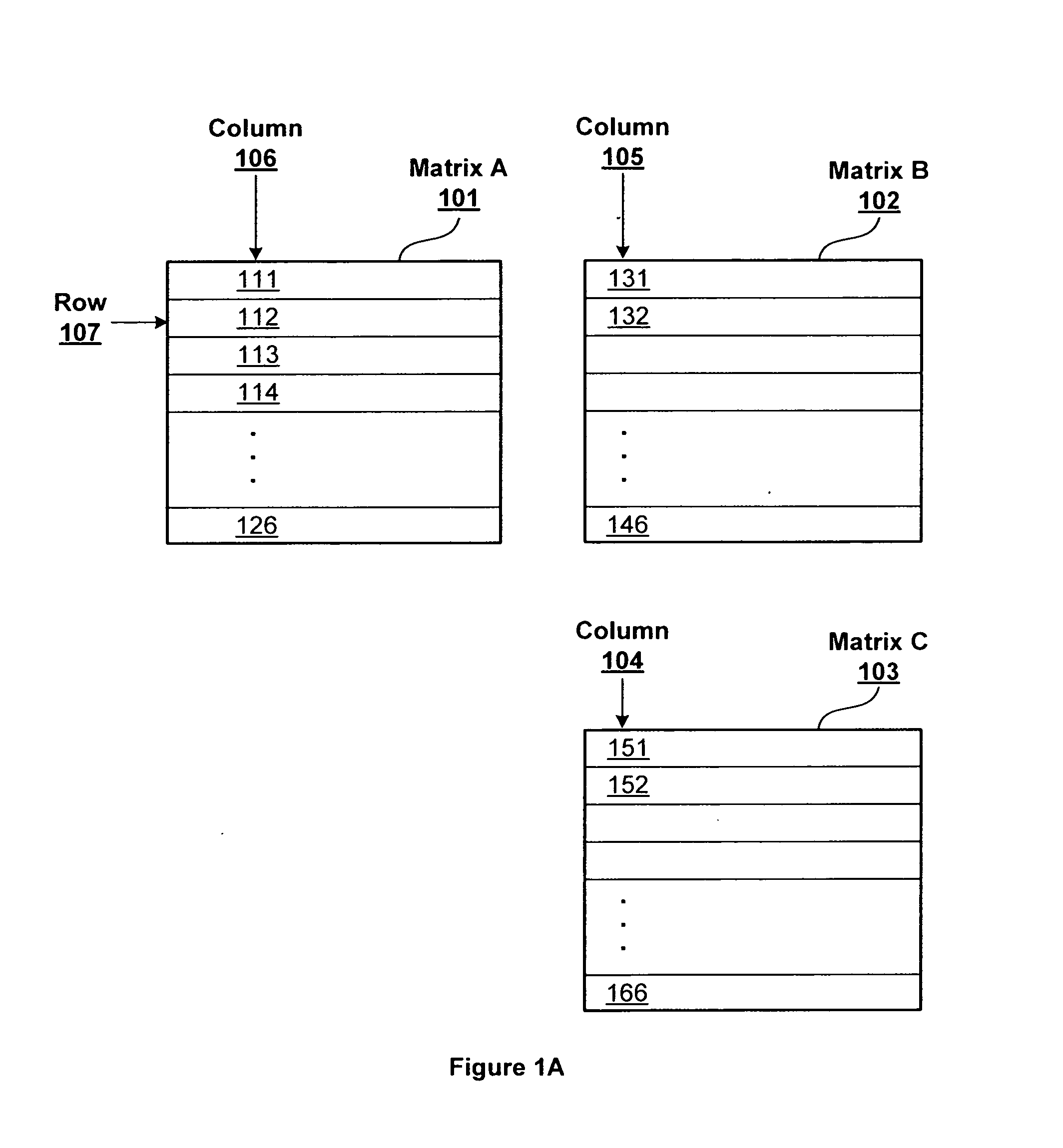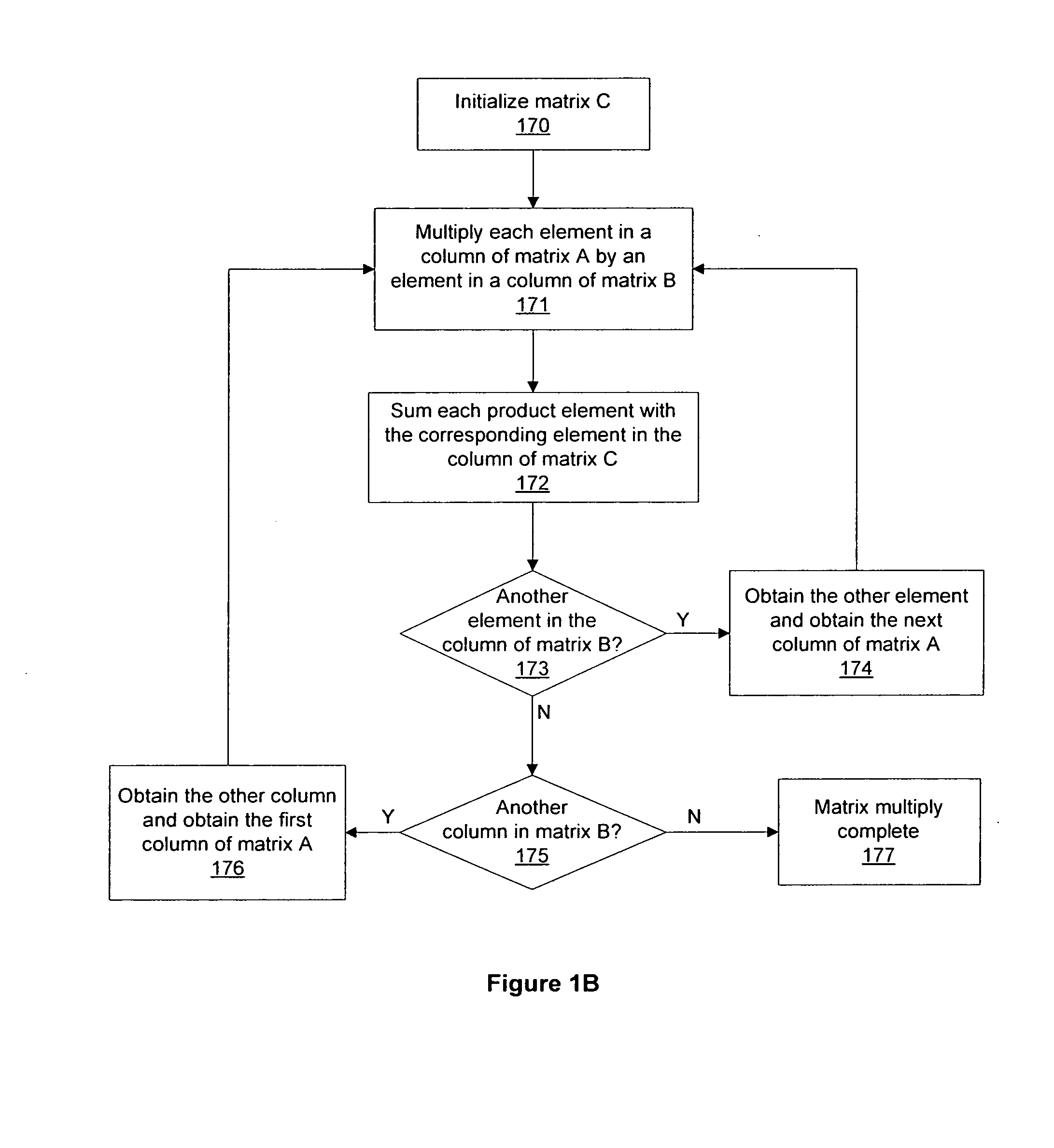Matrix multiply with reduced bandwidth requirements
a matrix multiplication and memory bandwidth technology, applied in the field of performing matrix multiplication, can solve the problem of limiting the overall computational performance of the processing device for matrix multiplication, and achieve the effect of reducing the memory bandwidth requirements for matrix multiplication, reducing the memory bandwidth requirements for performing operations such as multiplying add, and reducing the memory bandwidth requirements
- Summary
- Abstract
- Description
- Claims
- Application Information
AI Technical Summary
Benefits of technology
Problems solved by technology
Method used
Image
Examples
Embodiment Construction
[0015] In the following description, numerous specific details are set forth to provide a more thorough understanding of the present invention. However, it will be apparent to one of skill in the art that the present invention may be practiced without one or more of these specific details. In other instances, well-known features have not been described in order to avoid obscuring the present invention.
[0016]FIG. 1A illustrates a conceptual diagram of a matrix A 101 and a matrix B 102 that are multiplied to produce a matrix C 103, in accordance with one or more aspects of the present invention. Conventionally, a dot product is computed using the elements in a row of matrix A 101 and a column of matrix B 102 to produce an element of a column of matrix C 103. For example the elements in row 107 of matrix A 101 and the elements, e.g., 131, 132, and 146, in column 105 of matrix B 102, are used to produce element 152 in column 104 of matrix C 103. When multiple execution threads are used...
PUM
 Login to View More
Login to View More Abstract
Description
Claims
Application Information
 Login to View More
Login to View More - R&D
- Intellectual Property
- Life Sciences
- Materials
- Tech Scout
- Unparalleled Data Quality
- Higher Quality Content
- 60% Fewer Hallucinations
Browse by: Latest US Patents, China's latest patents, Technical Efficacy Thesaurus, Application Domain, Technology Topic, Popular Technical Reports.
© 2025 PatSnap. All rights reserved.Legal|Privacy policy|Modern Slavery Act Transparency Statement|Sitemap|About US| Contact US: help@patsnap.com



